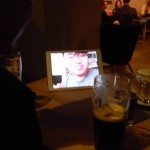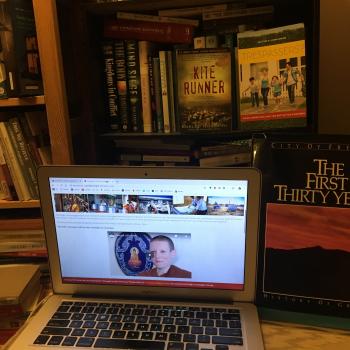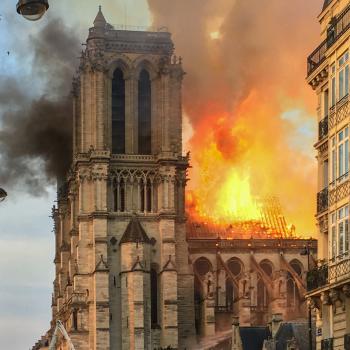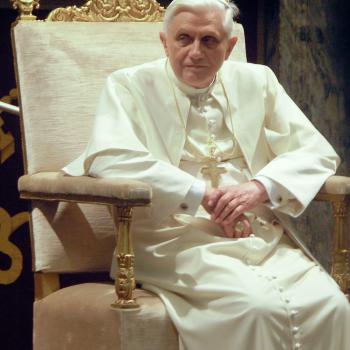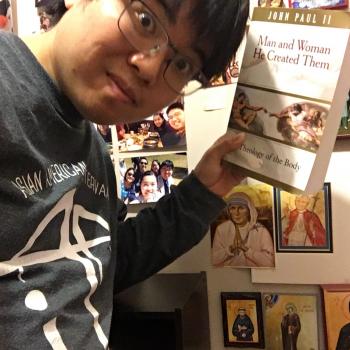![Black Madonna of Częstochowa (Original_Black_Madonna_of_Częstochowa) [Public Domain], via Wikimedia Commons](https://wp-media.patheos.com/blogs/sites/721/2015/04/Original_Black_Madonna_of_Cze%CC%A8stochowa-721x1024.jpg)
But there is another more compelling reason for Eugenia to post here. While Chris Altieri has criticized the participants at World Youth Day who are nearing age thirty for extended adulthood, Eugenia fits even his criterion for what ‘youth’ are. This is not to take a position on ‘youth’ – we can only be persons – but it is to say that this is an account of how one young Latin Catholic Person encountered the saints in the city of Kraków and cared enough about communion to tell an Eastern Catholic Person about it. The term ‘City of Saints’ is admittedly from George Weigel’s newest book, but it was also used widely during the festivities in Kraków, so any convergences with Weigel’s text is (unless noted) genuinely incidental.
Less than a week ago, I returned back to the States after almost two weeks in Poland. There, I was incredibly blessed to be a part of the 2016 World Youth Day in Kraków. I went as a vocalist with the choir for the English language liturgies at Kraków’s Tauron Arena, which had been transformed for WYD into the “Mercy Centre” by the Knights of Columbus and partners. (But more on that later). After a couple days of jetlag getting the best of me and struggling to stay awake past 9pm, and a lack of worthy pastries and access to churches every block I found myself on, I checked in with my former professor, mentor, and friend Justin Tse, who invited me to do a series of reflections on my experience.
But first, why is a cradle Latin Catholic writing something (about a rather Latin-centric event) for Eastern Catholic Person? Upon Pope Francis’ arrival in Poland, he addressed the President, civil authorities, and diplomats outside of Wawel Castle. In his address to them, he congratulated Poland on the 1,050th anniversary of the nation’s baptism, as well as admiring the healthy memory of the Polish people, saying: “Memory is the hallmark of the Polish people.” And of course, he spoke of St. John Paul II as “originator and promoter of the World Youth Days,” going on to say “Pope John Paul liked to speak of a Europe that breathes with two lungs,” which Justin took to me that of course I could write for Eastern Catholic Person as a Latin Catholic Person.
In fact, this idea of “two lungs” was a metaphor used frequently by John Paul II in terms of ecumenism between the Eastern and Western Churches. But while he popularized the term, I actually recently learned that the person who should really be credited with coining it is the Russian Symbolist poet Vyacheslav Ivanov – which as a Russian and Slavic Literatures minor, I happen to find very exciting! According to Yuli Shreider, “Vyacheslav Ivanov, later echoed by Pope John Paul II, said ‘Europe must breathe with two lungs: Catholicism and Orthodoxy'” (Shreider, “Russian Catholicism,” in Religion, State and Society, 24(1), 55).
Pope Francis, in his typically vague way, is possibly saying that Poland breathes through two lungs relatively healthily in terms of its local spirituality as well as its attempts at dialogue with its Eastern brethren. Polish Catholicism, though it is predominantly Latin, has a number of elements from their Byzantine neighbors. The shared veneration between Latins and Byzantines of the icon of the Black Madonna is a visible example of this. In a way, I am not that different.I’m Latin Catholic through and through, but I’m heavily influenced by my Eastern friends and family, including Eastern Catholic Person Justin. Just as Justin has fallen head over heels over the icon of the Black Madonna, I’ve got a history of my own devotion to her too, and my story would be incomplete without beginning with some kind of reference to her.
Or perhaps, some kind of reverence to her.

